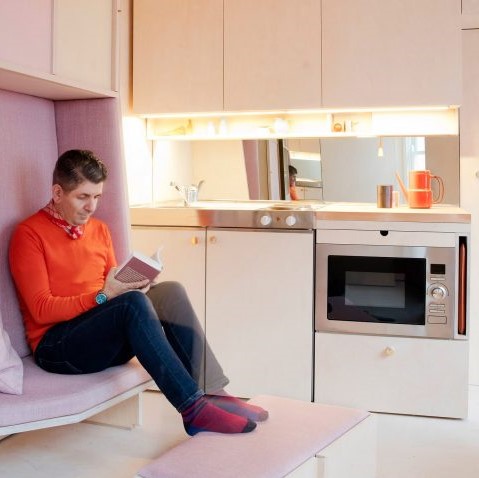Future Trends: The New Home
23 Jul 2019

When looking into The New Home, a few factors require marketer’s attention - understanding synergy is fundamental for any business’ action aimed at creating value for its customers.
In the present article we’ll see how, both structural and behavioural factors are influencing people’s lives.
Insights
To begin with, home ownership is still an aspiration for most UK consumers. According to the Office for National Statistics (ONS) English Housing Survey related to 2017/2018 data, only 64% of Brits own a property.
Furthermore, landmarks, like marriage or retirement, are no longer the predictable concept they once were. As the ONS’s figures reveal, for example, in 2017, 3.4 million consumers aged 20-34 in the UK lived at home with their parents compared to the 2.6 million in 2005. Additionally, in August 2018, 12% of British consumers in their 30’s said they were planning to have a baby in the next year - only 9% of those in their 20’s declared the same intention.
According to the 2016 ONS Household Projections in England report, single-person households are projected to increase by 26% between 2016 and 2041, driven by those aged 65 years and over.
For many, life-stage delays are an active choice, for others, a forced imposition.
Whatever the case, such postponements have brought less rigidly structured and predictable life trajectories.
Consequentially, as life is reshaping and adapting to new rules, so are the places where people live and how they live within them.
Opportunities
We just saw how solo-living is about to characterise the decades ahead. This why brands shouldn’t miss the opportunity of making this lifestyle more comfortable and convenient, bringing customers effective and economical solutions.
There are many questions businesses could address with new ideas, products and services – from space management and environmentally friendly solutions, to making this new houses quickly and easily adaptable to hobbies or social occasions.
Consumers are increasingly looking for access to everything they need within the boundaries of their homes. Therefore the house turns into a space for relaxation and entertainment, where people can socialise, work, and cultivate their hobbies and passions.
But more than ever, the house has become personal: 44% of women and 32% of men consider their house as an extension of their personal identity. In particular, this seems to be true for those between 65 and 74 years of age (40%) and older than 75 (45%).
In other words, the home, whether owned or rented, has recently become an additional way to express passions and personality. For many, the home should be cosy, charming, and a space to retreat from the outside world. For others, the home should be multitasking with in-home leisure and entertainment opportunities – it must fulfil the role of office, gym a place where you can relax and socialise.
Therefore brands have the chance to assist consumers in curating and perfecting their homes.
For instance, businesses could think of new opportunities for making rentals homely and easily sharable.
At the same time, as lives are becoming more fluid, brands could think of showing customers how their home space could change and adapt to their lifestyles, showing how homes could accommodate to multiple activities, or taken with them as they move.
In conclusion, compact and flexible living ideas would be ideal for travellers, minimalist lovers, those looking for financial freedom and many others looking for designing an intimate space to live in their on-off lives.
Case study: Studiomama

Adaptable furniture for small homes
The Scandinavian design consultancy Studiomama has converted a 13 square meters single storey office building into a home. Claiming to be London’s smallest house, the building comprises of custom built plywood units with specific uses to maximise space.
Each unit hosts a different function, including a bed, a work space, lounge seats, a kitchen, bathroom, closet storage and dining area. The company aims to make tiny spaces comfortable for living while making it appear larger than its minuscule square meterage.
Case study: TheHabit

From stylish furniture to workout equipment
Hong Kong-based design studio, TheHabit, offers stylish furniture with the ability to also become workout equipment: the coffee table doubles as a workout bench, and the side tables, as dumbbells.
Combining elements of fitness and furniture together, the brand wants to respond to squeezed living spaces and time, helping people to easily exercise into their schedules and homes with comfort.



